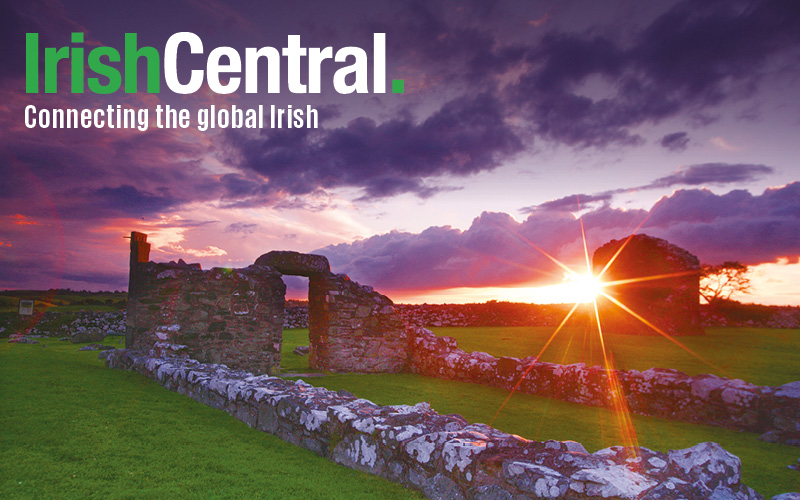If Trump’s critics have no clue of what to make of his supporters, maybe they need to spend more time on their argument rather than their enemy.
This week was a big week in New York City—and national—politics. The Republican congressional race on Staten Island between Irish American incumbent Dan Donovan and controversial challenger Michael Grimm was seen, like pretty much everything else these days, as a referendum on President Trump and the new, crazy world order he has established in Washington.
In the run-up to the Donovan-Grimm clash on Tuesday, Irish American journalist Kevin B. Sullivan wrote an interesting analysis about Staten Island in Commonweal magazine entitled “A Trumpian Slice of New York City.”
Read more: First Irishman was black with blue eyes says genetic expert
Another thing to watch in tonight's primaries: President Trump's power.
He endorsed Donovan in #NY11, the less-Trumpian candidate in "A Trumpian Slice of New York City" https://t.co/RjAX0182As https://t.co/8bR3iVqvMZ
— Alexi McCammond (@alexi) June 26, 2018
“To understand,” Sullivan wrote, how this part of generally anti-Trump New York City can be so pro-Trump, “it’s helpful to look at the particular political and cultural history of New York’s so-called forgotten borough over the past half-century.”
Sullivan adds, “Situated across New York Harbor from Manhattan, and separated from Brooklyn by a tidal strait known as The Narrows, Staten Island is a community apart from the rest of New York, and not just geographically. Linking the borough to Brooklyn is the Verrazano-Narrows Bridge … [which] … offered an escape route of sorts for the many working-class Italian and Irish who were skeptical of urban liberalism and fearful of rising crime and drug use in the city.”
Moses noted that Gersh Kuntzman in the New York Daily News had some fun in the wake of Trump’s election by calling Staten Island “New York’s Idaho.”
Read more: Why don't people in Ireland consider an Irish American to be Irish?
.@GershKuntzman: Trump-loving Staten Island is New York's Idaho https://t.co/aURlFkSxtt pic.twitter.com/mrDbUCtKOg
— New York Daily News (@NYDailyNews) November 10, 2016
Also this week, The New York Times magazine published a piece of writing that, more and more, you will only find in The New York Times. Written by accomplished author, scholar and journalist Emily Bazelon, the essay was timely, thoughtful, complex and, oh yeah, kind of clueless.
Entitled “White People Are Noticing Something New: Their Own Whiteness,” Bazelon spent lots of time gleefully noting that lots and lots of white people are privileged yet insensitive and spend lots of time not thinking about being white, because “being white in America has long been treated, at least by white people, as too familiar to be of much interest.”
Bazelon adds, “We generally prefer to frame identity in ethnic terms instead: Identifying as Italian or Irish or Jewish seems to come with zest, pathos and a chance to take pride in some shared history. Plain undifferentiated whiteness, on the other hand, is a ‘toggle between nothingness and awfulness,’ writes Nell Irvin Painter, an emeritus professor of history at Princeton and author of the 2010 book The History of White People.”
And that’s pretty much all Bazelon has to say about the Irish and other white ethnic groups, who, by some estimates, represent as many as 50 million Americans, often living near and around America’s cosmopolitan, Trump-hating cities.
This great article dropped a couple of weeks ago, but I just made the time to read it, and I highly recommend you do, too: https://t.co/tVn332eaUS @CCIBoston #whiteness #race
— Paul Suk-Hyun Yoon (@paulsyoon) June 26, 2018
So much ink has been spilled, so many gigabytes burned, so many buckets of tears cried by right-thinking Trump haters like Bazelon. And I include myself in that group. That’s why it’s infuriating when folks who despise Trump and his supporters because they think about things so simplistically ... offer up analysis that is pretty much equally simplistic!
Too often, Trump haters are satisfied lumping all of his angry minions into one big ball of aging white rage. But when you see an Irish American cop from Staten Island and a sixth-generation farmer from, you know, Idaho, as essentially the same type of person, who is it that really fails to appreciate American diversity?
In her long, extended analysis of whiteness and its political consequences, the only other time Bazelon mentions immigration or assimilation is when she talks about anti-Chinese laws and a bizarre 1923 Supreme Court case involving the racial categorization of a man from India.
This is not to excuse Irish Americans and others for ignoring their humble immigrant roots and embracing a nativist bully. But if Trump’s critics have no clue of what to make of his supporters, maybe they need to spend more time on their argument rather than their enemy.




Comments